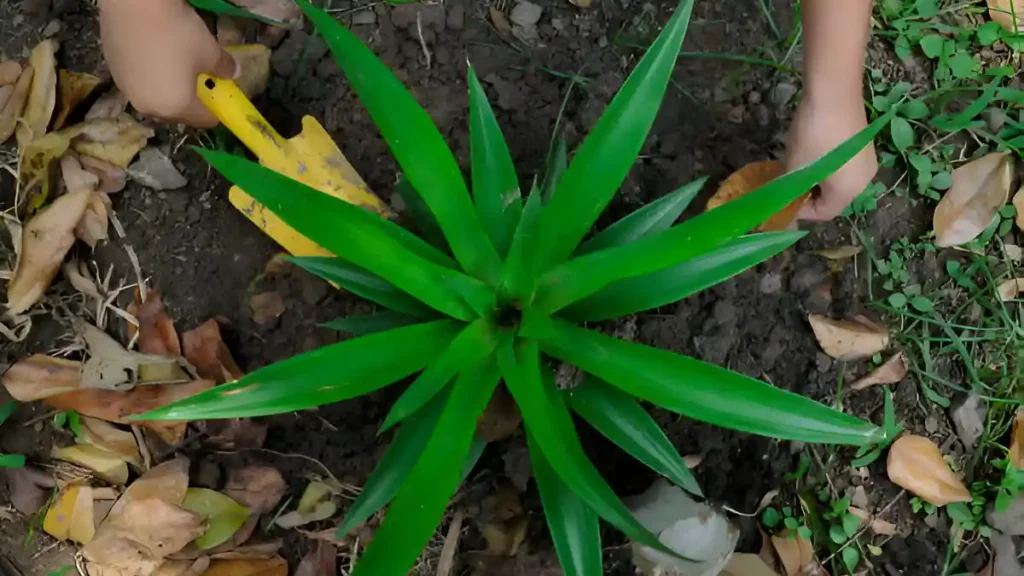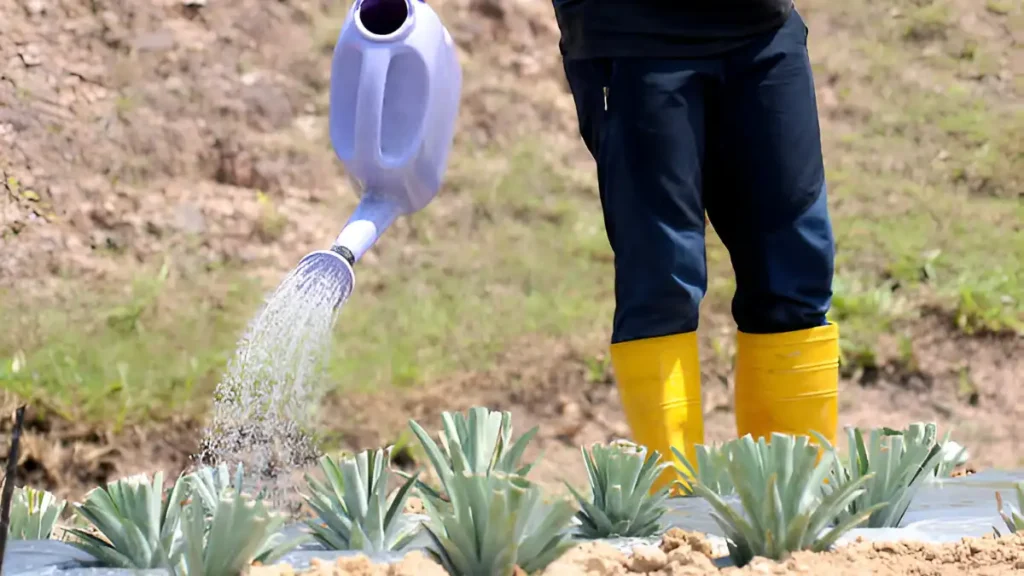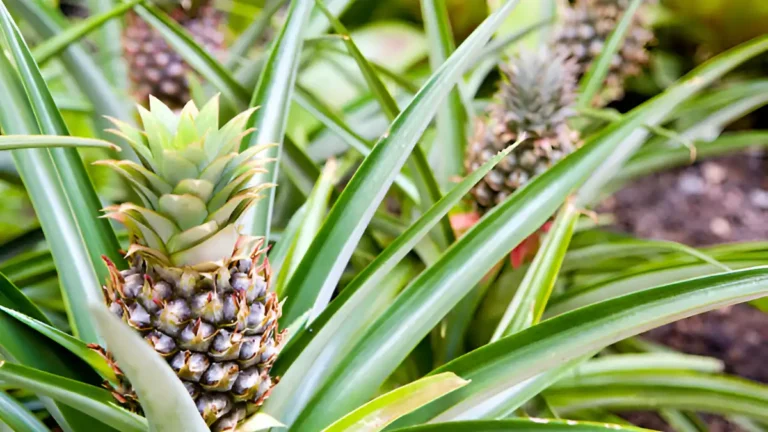A tropical fruit with a characteristic spiky look, pineapple is prized for its vivid, sweet-tart flavor. It is known as Ananas comosus in science. Although it originated in South America, specifically in the area between southern Brazil and Paraguay, it is currently grown in many warm climes worldwide. Pineapple, a member of the bromeliad family, is a herbaceous perennial. This article provides information about planting and proper maintenance of pineapple plant.
Let’s find out how to grow a pineapple plant:
Pineapple cultivation is relatively easy. This step-by-step tutorial will help you plant a pineapple, which is a somewhat easy and enjoyable activity.
Learn how to plant a pineapple:
- Choose a pineapple that is ripe and has vibrant green leaves. Slice off the pineapple’s top using a sharp knife. Take off any extra fruit and some of the lower leaves. The stem just needs to be partially submerged when placing the dry crown in a glass of water. Every few days, change the water.
- After roots appear, plant in a sandy loam that drains well and is rich in nutrients. Plant crowns with 1-3 feet separating them in full sun. Assume that the leaves of the pot are above the soil by checking for drainage holes. Provide a bright windowsill for a pineapple to sit in and expose it to six to eight hours of sunshine each day. The long, sword-like leaves of pineapple plants can grow to be as much as 5 feet long in mature plants, or 2 to 8 inches long in young ones.

Proper care of pineapple plants:
A pineapple plant is relatively simple to care for, but the appropriate approach must be used. These pointers will assist you in taking good care of this plant.
Pineapple plant care:
Water properly
- Throughout its life, give your pineapple plant plenty of water. But avoid drowning the pineapple by overwatering; instead, let the soil dry out entirely before adding more water. To minimize evaporation, apply a thick layer of mulch to your plants if you are a chronic forgetter about watering them.
Fertilizer for pineapple plants
- Composting the soil before planting is the best approach to nourish your pineapple. However, if you’d like, you can fertilize young pineapple plants once a month during their growing season with a light liquid fertilizer. Avoid using synthetic or heavy fertilizers as they may cause the plant to burn.
Pruning and Propagating
- Plant health is not the primary concern when pruning a pineapple plant, beauty comes first. To achieve a more uniform appearance, simply trim off the longer leaves. Cutting off the leafy top of a ripe pineapple is one way to propagate a new pineapple plant. Before planting it in the ground, allow it to dry for a few days.
Potting and Repotting Pineapple
- Repotting pineapples is usually not necessary. The plant will start producing branches from its base as it ages. When you harvest the fruit, the mother plant will start to deteriorate, so it’s best to eliminate it and focus on the offshoots. Choose a slightly larger container with good drainage and fresh soil mix.
Warm and Moisture
- Humidity ranges from moderate to high ideal for pineapple plants. Temperatures between 65 and 95 degrees Fahrenheit are ideal for pineapple plants to grow in. Once the weather cools off, make sure you bring the plant inside to a well-lit area. Mist the plant occasionally to enhance humidity if you live in a dry region.
Common diseases and their solutions
- There are several typical issues with pineapples. Aside from black rot and white leaf spot, other diseases that could damage pineapple are bacterial butt rot. Aphids, scales, and mealybugs should be avoided. Apply neem oil or insecticidal soap to the plant if you find any. To lessen the chance of pests, keep the plant happy and healthy.

Conclusion:
In a tropical climate or, with the right care, indoors, growing pineapple plant may be a tasty and fulfilling experience. It takes a while for each plant to provide a single fruit—between 18 and 24 months. Once established, pineapple plants only require routine watering and sporadic fertilizing, making them comparatively low-maintenance. If you follow the above guidelines, you should be able to harvest an abundance of delicious, sweet pineapples.
Certainly! If you’d like to learn more, please consider following our WhatsApp Channel: Harvest Gardening
A frequently asked questions:
Q1. Do pineapple plants need full sun?
A1. Yes, full sun is necessary for pineapple plants to grow well. For best growth, they need at least six hours of direct sunlight per day.
Q2. Can dogs have pineapple?
A2. In moderation, dogs can consume pineapple, but they should avoid the skin and core because they are difficult to digest.
Q3. What type of soil is best for growing pineapples?
A3. Pineapples thrive on acidic, well-drained soil with a pH of 5.5-6.5 and organic matter like humus or compost, with a combination of compost, perlite, and peat moss providing optimal aeration and moisture retention.
Q4. What are the main types of pineapple plants?
A4. The four primary varieties of pineapple plants are Abacaxi, Queen, Red Spanish, and Smooth Cayenne.
Q5. How long does a pineapple plant live?
A5. Pineapple plants can have varying lifespans as perennials according to climate, variety, and care. Your pineapple plant’s lifespan may be increased with the right situations and care.

